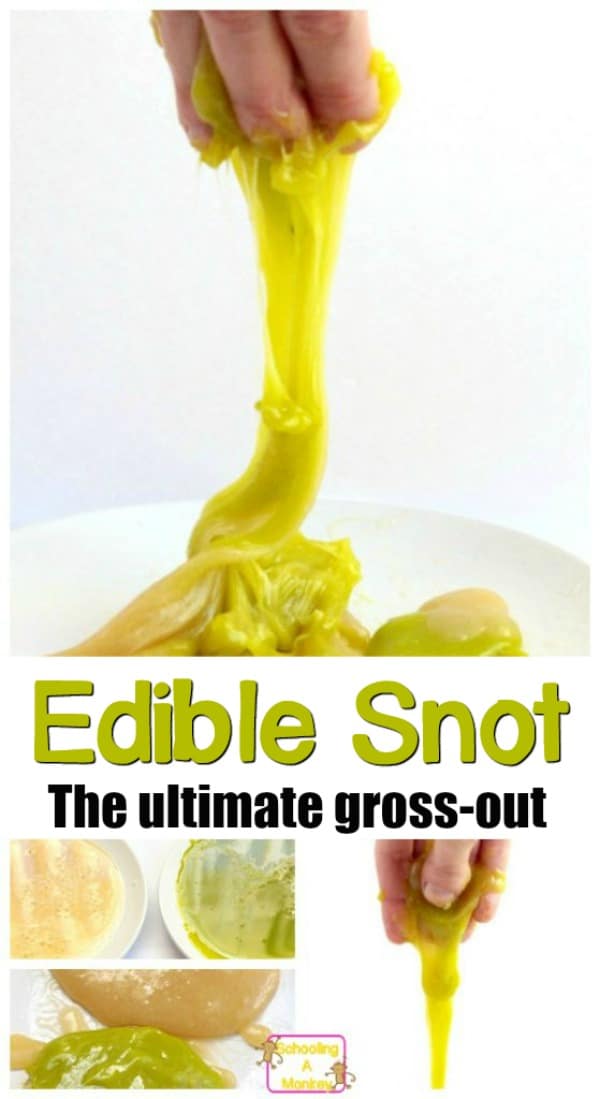Making candy is a fun way to explore chemistry in the kitchen. Try these fun candy chemistry experiments making edible taffy slime.
Kids will love it! This a wonderful fun version of our slime recipes that is an alternative to questionable ingredients like Borax, laundry starch, or shaving cream, and even better, you can actually eat it, because it’s candy!
Kids will love making this one.
Sometimes, when you set out to do one thing, you learn something else entirely different. That is what our kids learned in this candy chemistry lesson, which is what Christmas STEM activities are all about!
We set out to make taffy, but we learned a whole lot more along the way about chemistry, temperatures, measuring, and a whole lot more that can be applied to every area of science and technology.
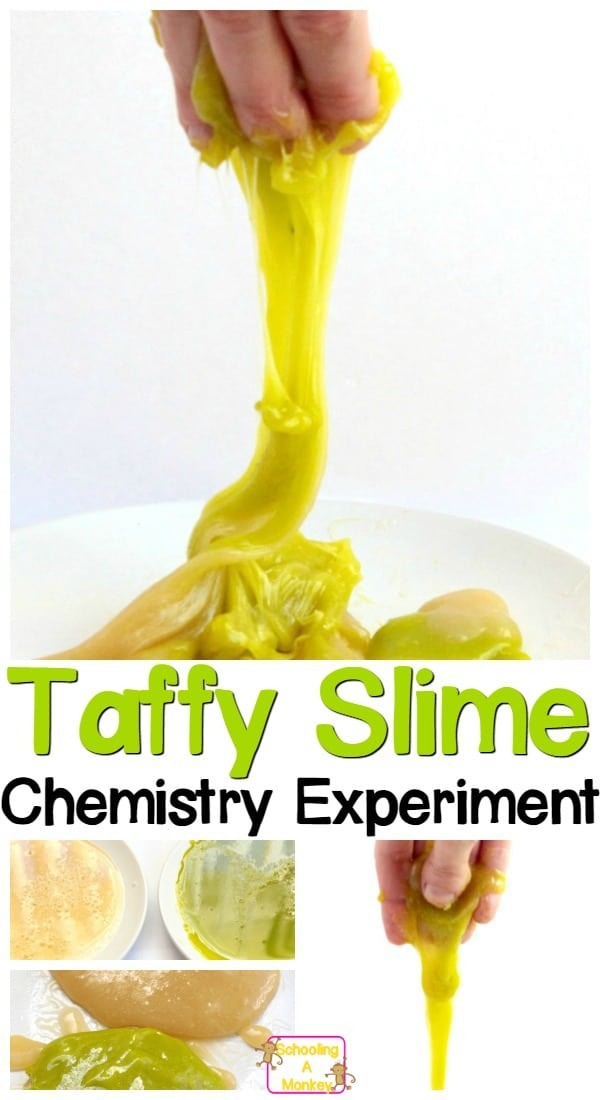
We learned in a series of chemistry experiments just how tricky it is to make candy!
How to Make Taffy Slime
Read on to see how to make the very best edible candy slime! We have a few other non-traditional slime recipes as well, including baking soda slime, fluffy slime, and cranberry slime.
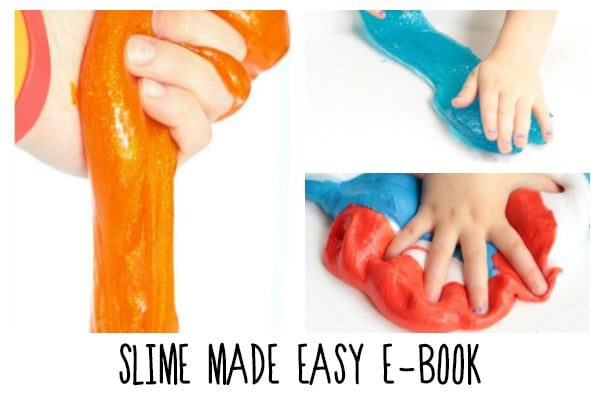
Taffy Slime Science
Traditional slime is made when glue and boron mix. This creates stretchy polymer chains that you can pull and play with. Edible candy slime works a little differently. It still uses chemistry, but in this case, the ingredients change when heat is applied.
Basically, this version of slime is made by slightly under cooking taffy. The more heat you apply, the harder the slime and candy will get.
You will want to continue to heat this sugar mixture until the soft ball stage to create this stretchy, gooey, and delicious slime.
TIPS FOR MAKING YOUR EDIBLE CANDY SLIME RECIPE A SUCCESS
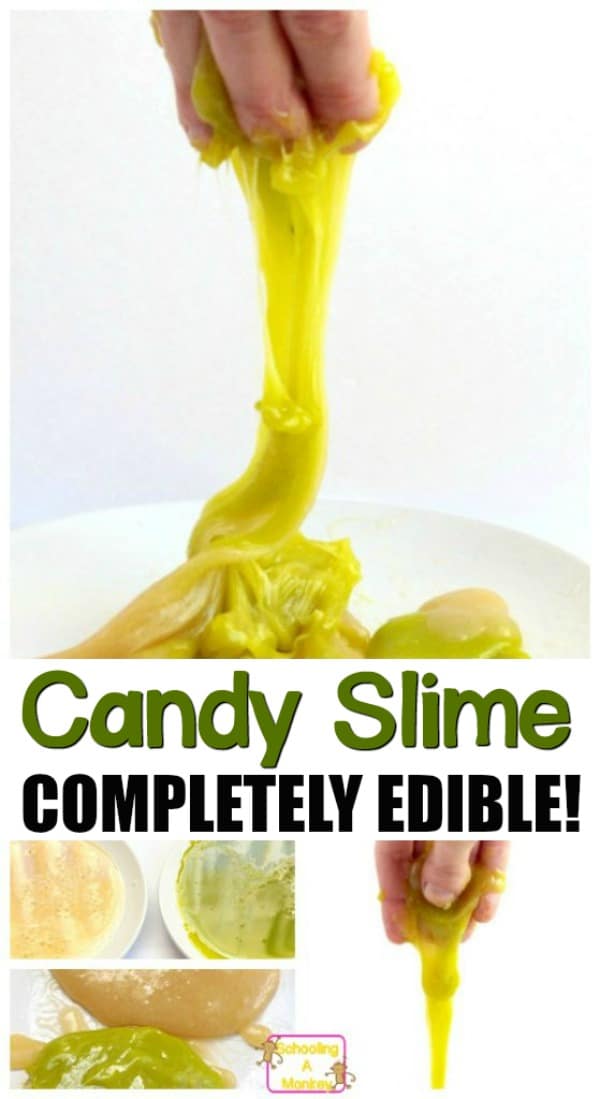
Making candy slime is completely different than glue slime. You will want to make the slime with an adult and children, because you’re working with boiling sugar. Use a candy thermometer (digital will help the best) and take your slime off when it reaches about 225 degrees Fahrenheit.
This will help it become candy like, but still gooier than traditional taffy. Your slime will probably be different every time, but it’s fun to try adjusting the heat just a little bit and see what different textures you get!
Candy Chemistry Experiments: Sticky, Edible Taffy Slime
Follow these directions and you’ll have the best taffy slime ever!
If you want to try your own candy chemistry experiments with taffy, here’s how we did our experiments.
We also try this recipe for our Halloween slime recipes!
Ingredients for Taffy Slime
Disclaimer: This post includes affiliate links for your convenience at no cost to you.
- Candy thermometer
- Sugar
- Corn syrup
- Butter
- Food coloring
- Corn starch
- Salt
- Flavoring (we used peppermint)
Directions for Edible Candy Slime
Before starting our chemistry experiments, I talked with the kids about how chemistry is an important part of cooking, particularly in candy making where the slightest deviation from the recipe can make a disaster.
We chose to experiment with a taffy recipe because not only does it require only a few ingredients, but it is actually pretty tricky to get right. Additionally, the kids love chewy candy!
Our recipe was simple. We boiled:
- 2/3rds of a cup corn syrup
- 1 cup sugar
- 1/2 cup water
- 1 tablespoon of butter
- 1 tablespoon corn starch
- Pinch of salt
The kids used the candy thermometer to monitor the boiling sugar until it reached 254 degrees (or at least, that’s what it looked like). Once the candy started to boil, we stopped stirring (too much stirring can crystallize the sugar- another chemistry tip!).
Suddenly, our sugar turned brown. When we poured out the taffy, it hardened into super-hard caramel almost instantly. We had heated it to a too-high temperature.
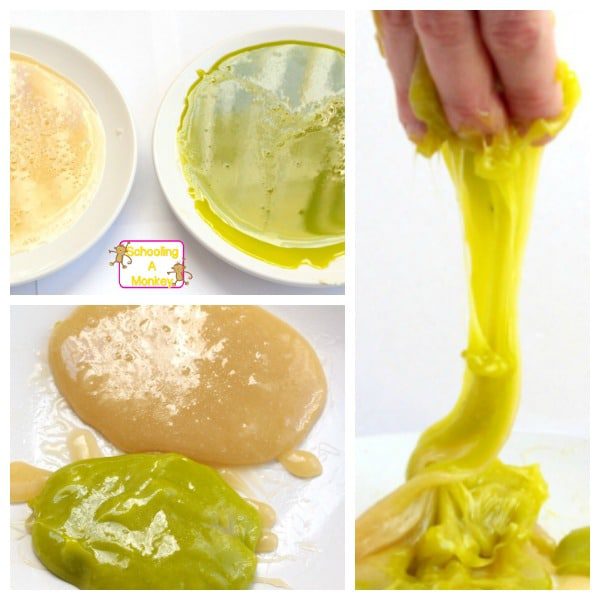
So, we got out our ingredients and tried again. This time, we removed our taffy right at 250 degrees, hoping it wouldn’t harden. It didn’t, so we hoped we were good to go.
We removed the taffy from the heat and added our coloring and flavoring. We poured our taffy onto buttered plates and let our taffy cool for 20 minutes.
After our taffy was cool, it was time to start pulling. We buttered our hands and got to work. It was at this point we realized that our taffy was too soft.
It wasn’t taffy candy, but taffy slime!
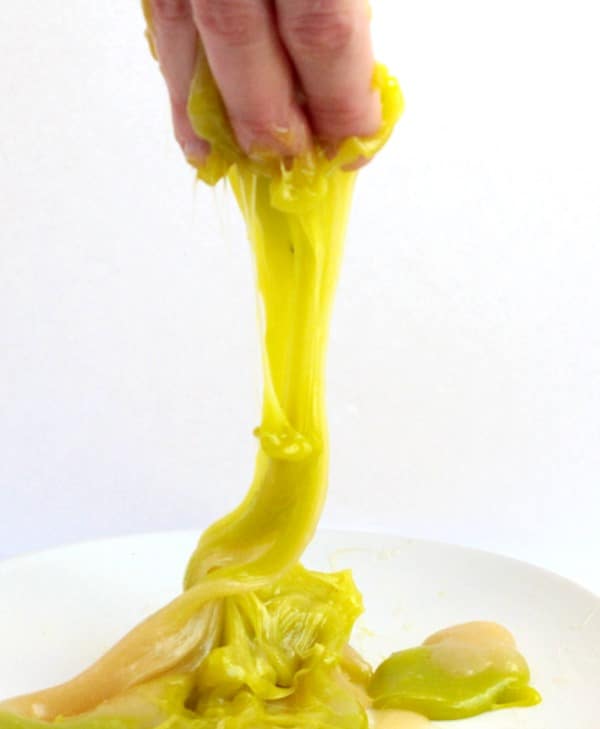
The kids actually loved the texture though, and they still had a lot of fun pulling it.
I talked about how, usually, when you pull taffy, air gets into it, which not only makes it chewier and stiffer, but it also lightens the color when the light refracts off of the taffy surface.
Although we didn’t end up with traditional taffy, the kids loved that they could eat this slime recipe and they learned a lot about the chemistry behind cooking.
